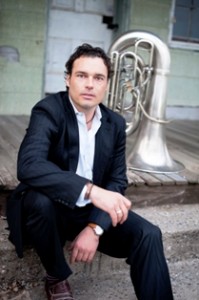
Janet Stanford
YES is the answer to this question judging from the enthusiastic audience response on October 10 to Imagination Stage’s Creative Conversation on the topic.
One hundred and forty parents, educators, and other stakeholders attended a panel discussion, moderated by Doug Herbert of the U.S. Dept. of Education’s Office of Innovation & Improvement, and then enjoyed breakout sessions that included sample sessions in professional development for teachers, creative parenting classes, and an opportunity to take the Torrance Test, the only nationally recognized measure for creativity that has been in use for more than 50 years.
Each of the four panelists described their viewpoint about creativity during the forum.
Developmental Psychologist Meredith Rowe debunked the commonly held assumption that creativity is a gift which cannot be taught.
Neuropsychologist Bill Stixrud spoke about what he sees daily in his clinical practice: that kids today enjoy less free play, feel more stress, are less motivated, and have lower self-esteem than past generations. His findings parallel data from the Torrance Test, which has noted a sharp decline in children’s creativity scores over the last 20 years, especially in the elementary grades. Stixrud recognizes that children are missing the benefits of creative play and arts education.
I discussed how theatre arts classes and arts integrated into the school curriculum can help children of all abilities to find motivation for their studies. Projects that are student-led and focused on creative problem solving have been shown to engage young people in ways that traditional modes of instruction no longer can.
Read More




 Nina Ozlu Tunceli
Nina Ozlu Tunceli



















 Emily Peck
Emily Peck





 John Legend received a Citizen Artist Award from The United States Conference of Mayors and Americans for the Arts. Also pictured are Philadelphia Mayor Micheal Nutter (left), New Orleans Mayor Mitch Landrieu, and Maryland Gov. Martin O'Malley. (Photo via USCM)
John Legend received a Citizen Artist Award from The United States Conference of Mayors and Americans for the Arts. Also pictured are Philadelphia Mayor Micheal Nutter (left), New Orleans Mayor Mitch Landrieu, and Maryland Gov. Martin O'Malley. (Photo via USCM)




 Janet Stanford
Janet Stanford














